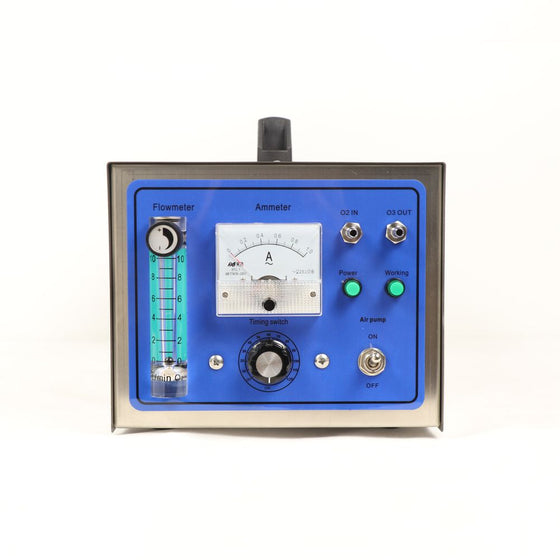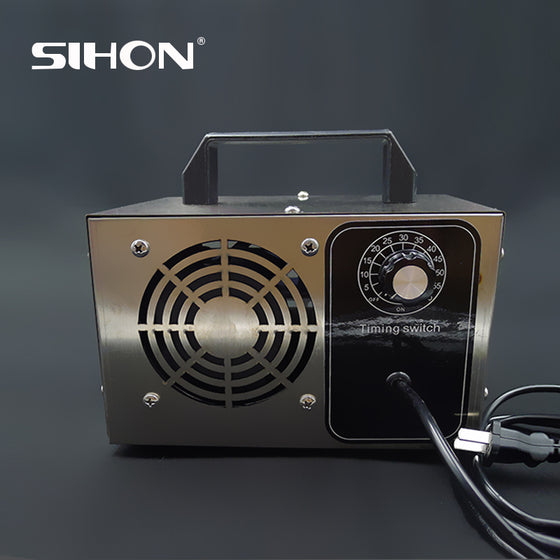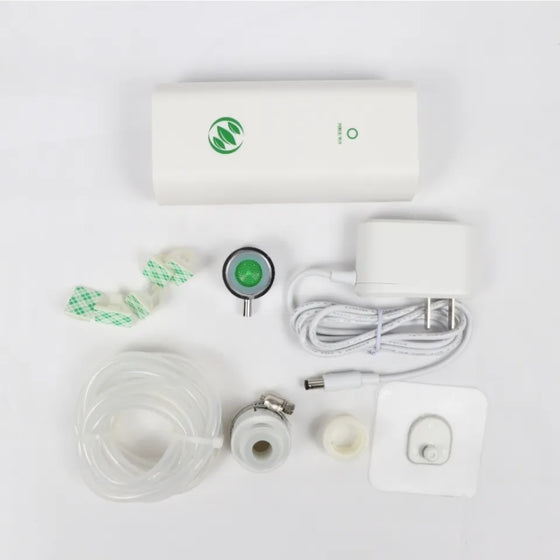Ozone vs. Chlorine: A Comparison for Water Disinfection

Ozone and chlorine show comparable disinfectant properties for purifying drinking water. Nevertheless, ozone water treatment remains relatively uncommon in many parts of the world. In contrast, chlorine remains the predominant disinfectant used worldwide. Ozone's rising popularity in various disinfection applications can be attributed to its enhanced reliability, user-friendliness, and safety during operation. Ozonization offers several advantages, including a high oxidation potential, exceptionally effective disinfection capabilities, faster processing times than traditional techniques, and the absence of harmful by-products. These attributes make ozonization a compelling choice for water treatment.
A Comparison between Ozone and Chlorine Dioxide
Chlorine is generally effective at neutralizing most bacteria in water, though Cryptosporidium remains an exception. However, the chlorination process can be time-consuming. Moreover, chlorination poses risks due to the production of trihalomethanes (THMs), which are carcinogenic disinfection by-products. In contrast, ozone water treatment proves highly efficient in eradicating bacteria and viruses, accomplishing the task within seconds (approximately 3,000 times faster than chlorination). Notably, ozonation is also capable of eliminating the persistent cryptosporidium pathogen mentioned earlier. An additional advantage of ozonization is the absence of by-products, as ozone swiftly reverts into pure oxygen.

Ozone: Stronger or Weaker?
Compared to chlorine dioxide, ozone boasts a higher oxidation potential, indicating its superior ability to break down organic compounds and other contaminants present in water. Ozone water treatment also exhibits faster reactivity than chlorine dioxide. Specifically, ozone's standard oxidation potential stands at 2.07 volts, while chlorine dioxide's standard oxidation potential is 1.5 volts. Consequently, ozone possesses a greater capacity for oxidizing and breaking down organic substances and contaminants in water when compared to chlorine dioxide.
Dangers of Chlorine
Disinfection By-products
Chlorine, when used as a disinfectant, leaves chemical residues that can pose risks if ingested. These residues are known as disinfection by-products (DBPs), which form when chlorine reacts with organic matter. Among the most prevalent DBPs found in chlorinated drinking water are trihalomethanes (THMs) and Haloacetic acids (HAAs). Numerous studies have established a connection between DBPs and cancer, prompting the International Agency for Research on Cancer (IARC) to classify the primary DBPs as potential human carcinogens. Health experts are concerned that prolonged exposure to DBPs may lead to health issues. Recent research has even linked the accumulation of chlorine compounds in breast tissue to an increased risk of breast cancer. In a study conducted in Hartford, Connecticut, it was found that women with breast cancer had 50 to 60% higher levels of chlorination by-products compared to women without breast cancer.
Potential Risks
Chlorine, while commonly used for water treatment, comes with potential dangers due to the chemical residue it leaves behind in treated water, which can be harmful if consumed. Additionally, it often imparts a chemical taste to the water and certain studies have raised concerns about its potential to increase cancer risk in individuals consuming chlorinated water. Moreover, the chemical water treatment process can cause equipment damage and release chemical residues into the surrounding environment.
On the other hand, ozonation, when implemented safely, offers a superior alternative, providing clean water without any chemical residues. Ozone water treatment effectively eliminates residual byproducts left from the chlorination process. Furthermore, studies have indicated that chlorination may be less effective in water bodies with high alkaline pH levels, while ozonation remains equally effective across the entire pH spectrum without altering the water's pH level.
Safe and Effective Ozonation Process
The ozonation process is a water treatment technique that employs ozone, which is dissolved in water to effectively disinfect and purify it. The generation of ozone entails utilizing an ozone generator, which transforms oxygen into ozone through high-voltage electrical discharge. The resulting ozone gas is then introduced into the water to be treated, where it initiates reactions with organic compounds and contaminants, breaking them down into simpler, less harmful molecules.
Ozone water treatment finds versatile applications in disinfecting and purifying water for various purposes, such as drinking water, wastewater treatment, and swimming pool sanitation. This method proves highly effective in eliminating an extensive array of contaminants, including bacteria, viruses, pesticides, and pharmaceuticals. Unlike chlorine, ozone water treatment gas does not produce any harmful byproducts and rapidly breaks down into oxygen gas, leaving no residual chemicals in the water. Furthermore, ozonation offers a more pleasant experience with a milder odor and taste compared to chlorine, which often imparts a strong and unpleasant chemical taste to the water.
Ozone Disinfection for Drinking Water
Ozone's exceptional oxidant and disinfectant properties make it an ideal choice for water treatment. It proves highly effective against waterborne pathogens and has the unique ability to disintegrate bacterial cell walls, a capability not shared by chlorine. Another advantage is ozone's rapid decay rate, causing it to revert to oxygen, eliminating the need for chemical storage as it must be generated on-site.
Ozone's versatility is evident in its efficacy over a wide pH range without forming disinfection by-products (DBPs). In contrast to chlorine, ozone readily reacts with natural organic matter (NOM). Among all oxidizing biocides, ozone stands out as the most potent chemical disinfectant against Cryptosporidium, a particularly challenging pathogen.
Both ozone and chlorine excel at removing bacteria and viruses; however, ozone demonstrates much lower CT values, indicating its greater efficiency in ozone water treatment. Furthermore, both are highly effective at controlling biofilm growth. Additionally, ozone's oxidizing properties can reduce the concentration of iron, manganese, and sulfur, while also addressing taste and odor problems in the water supply.

Ozone Swimming Pool Disinfection
Using ozone for pool disinfection offers several key advantages, with one of the most significant being its superior safety for human health compared to chlorine. Unlike chlorine, ozone water treatment does not produce harmful by-products, eliminating the risk of exposure to substances like chloramines and trihalomethanes. Furthermore, ozone is less likely to cause skin and eye irritation, and it has not been associated with respiratory issues such as asthma and bronchitis. Its use can provide a more pleasant and comfortable swimming experience while prioritizing the well-being of pool users.
Benefits of Ozone
● Ozone exhibits greater effectiveness than chlorine in eradicating viruses and bacteria.
● The process of ozonation only uses a brief contact time.
● Due to its rapid decomposition, ozone leaves no harmful residuals.
● Following ozonation, microorganisms do not regrow, except for those protected by the particulates in the wastewater stream.
● Ozonation increases the dissolved oxygen (DO) concentration of the effluent.
● There is no risk of ozone overdose, as any excess ozone not utilized in the water treatment process escapes from the water and reverts back to oxygen.
● Due to its high reactivity and corrosive nature, ozone necessitates the use of corrosion-resistant materials like Teflon or Stainless steel.
For further details, feel free to Reach Out to Us. We have the ideal Ozone Generators tailored to meet your demands.
New Arrivals
Leave A Reply
Your email address will not be published. Required fields are marked *






